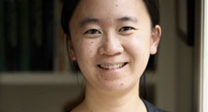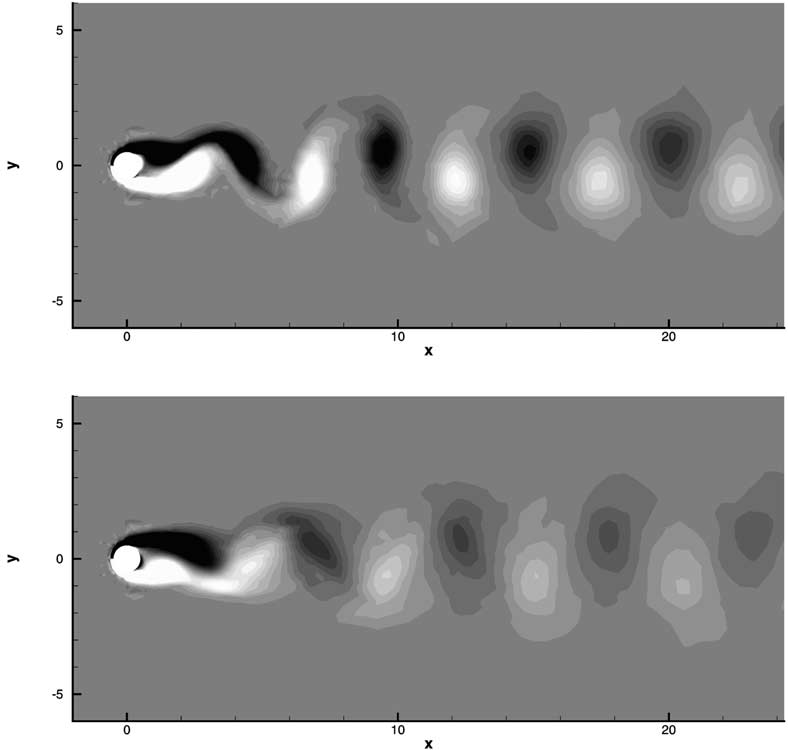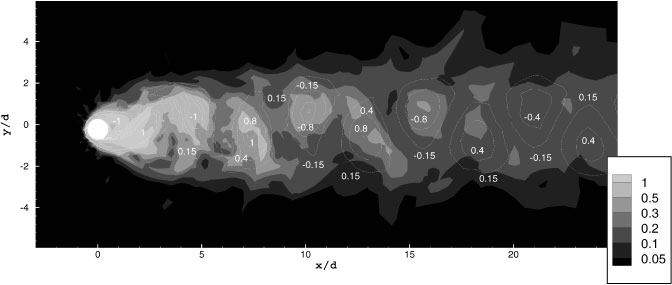Visualization
Visualization, sometimes referred to as visual data analysis, uses the graphical representation of data as a means of gaining understanding and insight into the data. Visualization research at SCI has focused on applications spanning computational fluid dynamics, medical imaging and analysis, biomedical data analysis, healthcare data analysis, weather data analysis, poetry, network and graph analysis, financial data analysis, etc.Research involves novel algorithm and technique development to building tools and systems that assist in the comprehension of massive amounts of (scientific) data. We also research the process of creating successful visualizations.
We strongly believe in the role of interactivity in visual data analysis. Therefore, much of our research is concerned with creating visualizations that are intuitive to interact with and also render at interactive rates.
Visualization at SCI includes the academic subfields of Scientific Visualization, Information Visualization and Visual Analytics.

Mike Kirby
Uncertainty Visualization
Alex Lex
Information VisualizationCenters and Labs:
- Visualization Design Lab (VDL)
- CEDMAV
- POWDER Display Wall
- Modeling, Display, and Understanding Uncertainty in Simulations for Policy Decision Making
- Topological Data Analysis for Large Network Visualization
Funded Research Projects:
Publications in Visualization:
  Display of Vector Fields Using a Reaction Diffusion Model A.R. Sanderson, C.R. Johnson, R.M. Kirby. In Proceeding of IEEE Visualization 2004, pp. 115--122. 2004. |
  Top Scientific Visualization Research Problems C.R. Johnson. In IEEE Computer Graphics and Applications: Visualization Viewpoints, Vol. 24, No. 4, pp. 13--17. July/August, 2004. |
 Higher-order nonlinear priors for surface reconstruction T. Tasdizen, R.T. Whitaker. In IEEE Trans. Pattern Anal. & Mach. Intel., Vol. 26, No. 7, pp. 878--891. July, 2004. |
  Biomedical Computing and Visualization Software Environments C.R. Johnson, R.S. MacLeod, S.G. Parker, D.M. Weinstein. In Comm. ACM, Vol. 47, No. 11, pp. 64--71. 2004. |
  Modeling Uncertainty in Flow Simulations via Generalized Polynomial Chaos D. Xiu, G.E. Karniadakis. In Journal of Computational Physics, Vol. 187, No. 1, pp. 137--167. 2003. DOI: 10.1016/S0021-9991(03)00092-5 We present a new algorithm to model the input uncertainty and its propagation in incompressible flow simulations. The stochastic input is represented spectrally by employing orthogonal polynomial functionals from the Askey scheme as trial basis to represent the random space. A standard Galerkin projection is applied in the random dimension to obtain the equations in the weak form. The resulting system of deterministic equations is then solved with standard methods to obtain the solution for each random mode. This approach can be considered as a generalization of the original polynomial chaos expansion, first introduced by Wiener [Am. J. Math. 60 (1938) 897]. The original method employs the Hermite polynomials (one of the 13 members of the Askey scheme) as the basis in random space. The algorithm is applied to micro-channel flows with random wall boundary conditions, and to external flows with random freestream. Efficiency and convergence are studied by comparing with exact solutions as well as numerical solutions obtained by Monte Carlo simulations. It is shown that the generalized polynomial chaos method promises a substantial speed-up compared with the Monte Carlo method. The utilization of different type orthogonal polynomials from the Askey scheme also provides a more efficient way to represent general non-Gaussian processes compared with the original Wiener–Hermite expansions. Keywords: Polynomial chaos, Uncertainty, Fluids, Stochastic modeling |
  Predictability and Uncertainty in CFD D. Lucor, D. Xiu, C.-H. Su, G.E. Karniadakis. In International Journal for Numerical Methods in Fluids, Vol. 43, No. 5, pp. 483--505. 2003. DOI: 10.1002/fld.500 CFD has reached some degree of maturity today, but the new question is how to construct simulation error bars that reflect uncertainties of the physical problem, in addition to the usual numerical inaccuracies. We present a fast Polynomial Chaos algorithm to model the input uncertainty and its propagation in incompressible flow simulations. The stochastic input is represented spectrally by Wiener–Hermite functionals, and the governing equations are formulated by employing Galerkin projections. The resulted system is deterministic, and therefore existing solvers can be used in this new context of stochastic simulations. The algorithm is applied to a second-order oscillator and to a flow-structure interaction problems. Open issues and extensions to general random distributions are presented. Keywords: computational fluid dynamics, polynomial chaos, Wiener–Hermite functionals, incompressible flows |
  A New Stochastic Approach to Transient Heat Conduction Modeling with Uncertainty D. Xiu, G.E. Karniadakis. In International Journal of Heat and Mass Transfer, Vol. 46, No. 24, pp. 4681--4693. 2003. DOI: 10.1016/S0017-9310(03)00299-0 We present a generalized polynomial chaos algorithm for the solution of transient heat conduction subject to uncertain inputs, i.e. random heat conductivity and capacity. The stochastic input and solution are represented spectrally by the orthogonal polynomial functionals from the Askey scheme, as a generalization of the original polynomial chaos idea of Wiener [Am. J. Math. 60 (1938) 897]. A Galerkin projection in random space is applied to derive the equations in the weak form. The resulting set of deterministic equations is subsequently discretized by the spectral/hp element method in physical space and integrated in time. Numerical examples are given and the convergence of the chaos expansion is demonstrated for a model problem. Keywords: Uncertainty, Stochastic modeling, Polynomial chaos, Transient heat conduction, Random medium |
  Display of Vector Fields Using a Reaction-Diffusion Model SCI Institute Technical Report, A.R. Sanderson, C.R. Johnson. No. UUSCI-2003-002, University of Utah, June, 2003. |
 A Constraint-Based Technique for Haptic Volume Exploration M. Ikits, J.D. Brederson, C.D. Hansen, C.R. Johnson. In Proceedings IEEE Visualization 2003, Seattle, WA, pp. 263--269. October, 2003. |
  Graphics Applications for Grid Computing C.D. Hansen, C.R. Johnson. In IEEE Comp. Graph. & Applic., pp. 20--21. March/April, 2003. |
  Particle-Based Simulation of Fluids S. Premoze, T. Tasdizen, J. Bigler, A.E. Lefohn, R. T. Whitaker. In Eurographics, pp. 401--410. 2003. |
  Feature preserving variational smoothing of terrain data T. Tasdizen, R.T. Whitaker. In IEEE Workshop on Variational, Geometric and Level Set Methods in Computer Vision, October, 2003. |
  Curvature-Based Transfer Functions for Direct Volume Rendering: Methods and Applications G. Kindlmann, R.T. Whitaker, T. Tasdizen, T. Möller. In Proceedings Visualization 2003, pp. 67. October, 2003. |
  Geometric Surface Processing via Normal Maps T. Tasdizen, R.T. Whitaker, P. Burchard, S. Osher. In ACM Transactions on Graphics, 2003. |
  A Next Step: Visualizing Errors and Uncertainty C.R. Johnson, A.R. Sanderson. In IEEE Computer Graphics and Applications, Vol. 23, No. 5, pp. 6--10. September/October, 2003. |











